CROPS IN CHINA
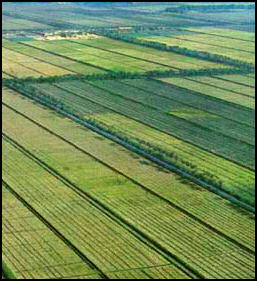
Fields in Yellow River areaMajor crops: rice, wheat, potatoes, corn, peanuts, tea, millet, barley, apples, cotton, oilseed. Wheat, kaoliang (sorghum), millet, barley, soy beans and corn are grown in the north. Rice is the dominate crop in the south. Wheat and corn are summer crops, potatoes and radishes are autumn crops.
The world's first peaches, soybeans, chrysanthemums, peonies, gardenias, forsythia and several kinds of lily all originally came from China. Peanuts where among many products introduced from the New World to Asia, where it was embraced by vegetarian Buddhists as a protein source.
China some years produces more than a third of the world's rice. China is also the world's leading producer of raw cotton, and a leading exporter of wheat and oilseeds (crushed to make cooking oil). Corn is grown for food, fodder and export." Other important crops include cabbage, celery, peas, beans, lettuce, leks, and onions.
China is now virtually self sufficient in wheat, rice and corn. Howard Schneider wrote in the Washington Post, “The government has encouraged production of these crops through measures such as setting base-line prices for farmers. To see how much longer China can remain self-sufficient, the markets for these staples are being watched closely by commodity trading companies, U.S. farmers, the World Bank and other organizations concerned with global food security. [Source: Howard Schneider, Washington Post May 22, 2011]
China is the world’s top consumer of meat and grain. As it becomes more affluent people consume more meat and cooking oil and this has lead to increased demand for soybeans as an oil source and feed for livestock.
Articles on AGRICULTURE IN CHINA factsanddetails.com and RURAL LIFE IN CHINA factsanddetails.com
Crops Grown in Different Regions of China
“Wheat is the staple food grain in north China and is eaten in the form of steamed bread and noodles. Per capita consumption has risen, and the demand for wheat flour has increased as incomes have risen. Wheat has been by far the most important imported grain. Winter wheat, which in the same year accounted for about 88 percent of total national output, is grown primarily in the Yangtze Valley and on the North China Plain. The crop is sown each fall from September through November and is harvested in May and June the subsequent year. Spring wheat is planted each spring in the north and northeast and is harvested in late summer. Spring wheat contributes about 12 percent of total wheat output.
“Corn is grown in most parts of the country but is most common in areas that also produce wheat. Corn production has increased substantially over time and in some years has been second only to production of rice. Consumers have traditionally considered corn less desirable for human use than rice or wheat. Nevertheless, it frequently yields more per unit of land than other varieties of grain, making it useful for maintaining subsistence. As incomes rose in the early 1980s, consumer demand for corn as a food grain decreased, and increasing quantities of corn were allocated for animal feed.
“Millet and sorghum are raised in the northern provinces, primarily in areas affected by drought. Millet is used primarily as a food grain. Sorghum is not a preferred food grain and in the 1980s was used for livestock feed and maotai, a potent alcoholic beverage. Other grains, such as field peas, beans, and pulses, are grown throughout China, Cotton is China's most important fiber crop. The crop is grown on the North China Plain and in the middle and lower reaches of the Yangtze Valley. Sugarcane accounted for about 83 percent of total output of sugar crops in 1985. Major producing provinces include Guangdong, Fujian, and Yunnan provinces and Guangxi-Zhuang Autonomous Region. Given China's different agricultural climatic regions, many varieties of vegetables are grown. Farmers raise vegetables in private plots for their own consumption. Near towns and cities, farmers grow vegetables for sale to meet the demand of urban consumers
Crop Production in China in the 1980s
In the mid-1980s China's farmers annually planted crops on about 145 million hectares of land. Eighty percent of the land was sown with grain, 5 percent with oilseed crops, 5 percent with fruits, 3 percent with vegetables, 2 percent with fiber crops, and 0.5 percent with sugar crops and tobacco. Other crops made up the remaining 4 percent. Grain is China's most important agricultural product. It is the source of most of the calories and protein in the average diet and accounts for a sizable proportion of the value of agricultural production. China's statisticians define grain to include wheat, rice, corn, sorghum, millet, potatoes (at one-fifth their fresh weight), soybeans, barley, oats, buckwheat, field peas, and beans. Grain output paralleled the increase in population from 1949 through 1975 but rose rapidly in the decade between 1975 and 1985. [Source: Library of Congress]
The early rice crop grows primarily in provinces along the Yangtze and in provinces in the south; it is planted in February to April and harvested in June and July and contributes about 34 percent to total rice output. Intermediate and single-crop late rice grows in the southwest and along the Yangtze; it is planted in March to June and harvested in October and November and also contributed about 34 percent to total rice output in the 1980s. Double-crop late rice, planted after the early crop is reaped, is harvested in October to November and adds about 25 percent to total rice production. Rice grown in the north is planted from April to June and harvested from September to October; it contributes about 7 percent to total production.
Increasingly Large Harvests in China
The autumn harvest typically accounts for three quarters of total grain production. China has had strong grain harvests from 2005 to 2010. Grain harvests in 2009 were a record 530.82 million tons. The harvest was about 510 million tons in 2007. Grain production dropped from 512 million tons in 1998 to 430 million tons in 2003 and increased to 470 million tons in 2004 and 484 million tons in 2005 thanks to favorable weather and incentive to farmers. In 1993 China produced 440 million tons of wheat, rice and other grains.
According to United Nations statistics, China’s cereal production is the largest in the world. In 2003 China produced 377 million tons, or 18.1 percent of total world production. Its plant oil crops — at 15 million tons in 2003 — are a close second to those of the United States and amounted to 12.6 percent of total world production. More specifically, China’s principal crops in 2004 were rice (176 million tons), corn (132 million tons), sweet potatoes (105 million tons), wheat (91 million tons), sugarcane (89 million tons), and potatoes (70 million tons). Other grains, such as barley, buckwheat, millet, oats, rye, sorghum, and tritcale (a wheat-rye hybrid), added substantially to overall grain production. [Source: Library of Congress]
Crops of peanuts, rapeseed, soybeans, and sugar beets also were significant, as was vegetable production in 2004. Among the highest levels of production were cabbages, tomatoes, cucumbers, and dry onions. In 2004 fruit production also became a significant aspect of the agricultural market. China produced large crops of watermelons, cantaloupes, and other melons that year. Other significant orchard products were apples, citrus fruits, bananas, and mangoes. China, a nation of numerous cigarette smokers, also produced 2.4 million tons of tobacco leaves. [Source: Library of Congress]
Fertilizer use was a major contributor to these abundant harvests. In 2002 China consumed 25.4 million tons of nitrogenous fertilizers, or 30 percent of total world consumption and more than double the consumption of other major users such as India and the United States in the same period. Among the less used fertilizers, China also was a leader. It consumed 9.9 million tons of phosphate fertilizers (29.5 percent of the world total) and 4.2 million tons of potash fertilizers (18.2 percent of the world total).
China Imports More Crops
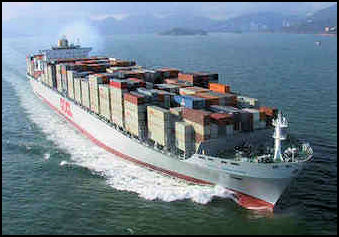
Demand from China has boosted prices for soy beans and cotton. U.S. soy bean farmers have made huge profits selling huge amounts of soy beans to China used to feed animals. China demand for rubber and palm oil was the singles largest source of economic growth in Southeast Asia.
China and Japan are the world's largest grain importers. China imported 16 million tons, mostly wheat, in 2006 as opposed to exporting 8 million tons of grain in 1994. China imports around $2.5 billion in agricultural products from the United States. Items imported include large amounts of wheat, corn and soybeans American farmers are profiting from China's grain shortages.
In October 2011, AP reported: China has made one of its biggest-ever purchases of corn on overseas markets, buying 900,000 metric tons of American corn and showing that growing Chinese demand will play an ever larger role in global grain prices. The U.S. Department of Agriculture said Thursday that China had made the purchase, which comes despite an expected record grain harvest in China this year. [Source: AP, October 14, 2011]
Hanver Li, chairman of the market research firm Shanghai JC Intelligence Co. Ltd., said Friday that the purchase was necessary to replenish China's dwindling corn reserves. He forecast that China will import between 7 and 10 million metric tons of corn over the next 12 months. He said China's rising imports will have a big impact on global corn prices in the long run.
China's Export Crops
Chinese food exports reached $27 billion in 2006. It exported $3.8 billion worth of food to the United States, including apple juice, garlic, sausage casings, canned mushrooms and honey. Many fruits and vegetables consumed in the United States are produced in Guangdong Province.
China exported $16.7 billion in agricultural products in 2001 while the United States exported $54 billion. Farmers on the coast are producing mushrooms, and green produce for export to Japan and other countries. farmers on the interior are growing less perishable items such as garlic, sesame and chili peppers and sweet potatoes which are made in vermicelli noodles in local plants. Among the products exported to the United States are garlic, broccoli, lettuce and strawberries.
For the fortunes of farmers to improve the need to switch from growing grain to producing more valuable crops. There is no money in grain. They can make more money producing crops for export. Already farmers are replacing corn and wheat with chili peppers, sesame seeds and sweet potatoes. Ponds of fish are being dug and pens for hog pens are being set up.
Competition from Chinese producer has caused U.S. farmers to ask for help form the U.S. government. Particularly hard hot are garlic, broccoli, lettuce and strawberry growers. While farms have suffered. Consumers have benefitted.
Many foods that have “Made in the U.S.A” labels in the United States have at least one ingredient made China. China produces 80 percent of the world’s wheat gluten, common in most bread, cakes and cookies, and 80 percent of the ascorbic acid, which is used as preservative in almost everything.
Shipments of plums, lemons, star fruit, kumquts, scallions and ginseng to the United States have been blocked by U.S. Food and Drug Administration because of problems with pesticides and toxic additives. A study published in April 2004 found that half the 11,000 companies that exported food failed to meet hygiene and quality standards. 2,600 of the companies had the export licenses revoked. 3,000 others were order to make changes,
Export Agriculture and WTO Membership and China
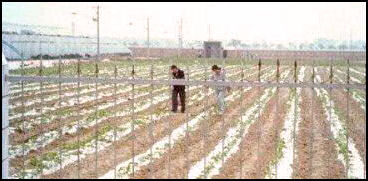
Plastic farming crops for export
WTO membership put pressure on millions of small, inefficient farmers who have difficulty competing against cheap imported grain but creates opportunities for farmers that grew products for export. As is the case in industry, the advantage China has is its abundant sources of cheap labor.
Farmers who grow wheat, corn and soybeans are expected to suffer because they can not compete with imports coming from the huge mechanized farms in the United States, Brazil, Canada, Argentina and elsewhere. Mechanized foreign farmers can raise corn for one fifth the cost of peasant Chinese farmers.
China is expected to dominate markets for products that require lots of manual labor to produce and prepare such as green vegetables, nuts, fruit and dressed meats like shrimp and chicken. While traders and exported are expected to profit handsomely, farmers are unlikely to earn much above subsistence level.
See WTO
See United States Trade Issues
See Inefficient Agriculture
GM Crops in China
Genetically-modified crops have been widely embraced in China and are widely grown. Already millions of acres of GM cotton has been planted. China is world’s leader in cotton production and most of it is GM cotton. China has also grows GM tomatoes, corn, tobacco, sweet peppers, petunias and poplar trees. The Chinese government generally favors genetically-engineered food because it is always looking for new ways to produce enough food for its large population. In one survey 79 percent of those asked said they supported the use of biotechnology to raise pest-resistant crops.
The introduction of GN rice holds great promise in increasing grain yields but also poses dangers to the environment. Plans to introduce GM rice held up by the government but were approved, making China the first country to widely use GM rice In early 2005, after extensive field trial, China’s National Biosaftey Committee approved several varieties of GM rice for consumption. The Ministry of Agriculture indicated the licencing of the rice would soon be ready and seeds could be read to plant oi as a little 12 months. But final authorization never came and may have been held up because of biotech rice strain from field test interbreeding with normal rice strains. As of 2007, Genetically-engineered rice was being grown in China. Protein from this rice has show up in Europe, where GM rice is banned. In February 2008, The EU placed restrictions on imported rice from China after some imports were found to contain a genetically-modified strain banned in the EU
Cotton bioengineered to withstand attacks from the cotton bollworm were introduced to north China around the year 2000. The cotton was engineered o produce a toxin — originally found in a soil bacterium called “Bacillus thuringiensis” — that was effective keeping the bollworm away and reducing the need for pesticide. Opponents of GM crops warned that the bollworms would develop resistance to the toxin and become more damaging than ever. That didn’t happen. Instead by eliminating the bollworms as a threat a new pest emerged — mirid bugs — that were not affected by the toxin and multiplied. Not only did they end up causing more damage than the bollworms they also devoured crops other than cotton such as grapes, apples, peaches and pears. Farmers handled the problem by using more pesticides than they did before the GM cotton was introduced. [Source: Per Pinstrup-Andersen, Cornell University, Los Angeles Times]
See GM Crops Under the Developing World, World Topics
GM Technology and Research in China
China has pumped billions of dollars into biotechnology with much of the research oriented towards boosting food supplies. Tan Ee Lyn of Reuters wrote: Ingo Potrykus, the retired, Swiss-based co-inventor of vitamin A-packed "golden rice", said China could fill a void in securing widespread use and recognition. "To revolutionise regulation ... it needs a lead country to do so, which is politically and economically independent of the GMO-hysteria of the West," Potrykus, whose invention has proved essential for rice-dependent countries, wrote in an e-mail. "China would have this potential and China could benefit a lot because China has a lot of food security problems ahead." Potrykus knows a great deal about the difficulties of winning acceptance for GM and cloned products. His variety was withheld from the market for 10 years because of regulations surrounding transgenic food. [Source: Tan Ee Lyn, Reuters, September 17, 2010]
At the institute's laboratory, another geneticist, Zhang Gengyun, is working with colleagues on flasks containing rice saplings -- another Chinese staple. They want to identify gene segments in rice that are behind high yields and better root systems, so that more rice may be produced using less land and water. "Now a lot of fertilisers are used and rice cannot totally absorb them. Extra fertilisers are dumped into our water system, which damage our environment," Zhang said.
Zhang's team hopes to identify the genes they want and transfer them into target rice species in three years using conventional breeding. That, he believes, will skirt whatever fears Chinese consumers may have. "That is not genetic modification. It is conventional breeding ... within 10 years, we can have environmentally friendly species that are water and fertiliser saving," he said.
The problem is not China's alone. Leading economist Jeffrey Sachs published articles in Nature magazine in July calling for serious preparations to feed a global population that will grow to 9.1 billion in 2050 from 6.8 billion now. Genetic modification technology will help, he said, but its consequences on human health and the environment must be closely monitored. International experts believe China can take a leading role in promoting the eventual acceptance transgenic — or genetically modified (GM) — produce.
Wheat and China
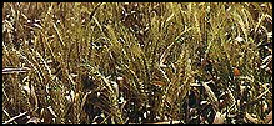
China is the world’s leading consumer and is now virtually self sufficient in producing it. Winter wheat is China’s second largest crop, behind rice. Henan Province, which surrounds Beijing, produces a quarter of China’s wheat. Chen Shuwei, the vice president and chief analyst at Beijing Orient Agribusiness Consultant, a Beijing firm with close links to the Agriculture Ministry, told the New York Times that the winter wheat crop supplied over 90 percent of the country’s supply and was typically harvested in June, with the rest grown over the summer. China is the world’s largest wheat grower, accounting for one-sixth of the world output in good years. The government has wheat stockpiles equal to half the country’s normal harvest.
Most wheat produced in China is grown in the northeast, which is suffering from the water shortages, droughts and the overpumping of aquifers Northeast China embraces the largest wheat-growing region in the world. It includes Shandong, Henam hebei, Anhui, , Shanxi, Shaanxi, Gansu and Jiangsu provinces.
Wheat is one of the world's top food crops and one of the first to be cultivated. The development of wheat agriculture is credited with dividing the Stone Age from the age of civilized man. Today, wheat is the world’s No.2 dietary staple just behind rice but ahead of corn and bananas, accounting for 19 percent of all the calories that mankind consumes, compared to 20 percent for rice.
Wheat can easily be grown, handled and stored and keeps so well it can shipped anywhere and stored for years. It yields a large amount of food for its weight and can be used in making a wide variety of foods: bread in Germany, noodles in China, pasta in Italy, couscous in North Africa, and breakfast cereal in the United States.
Most wheat is divided into two types: hard wheat and soft wheat. Hard wheat such as durums are used to make pastas and soft wheats are used in pastries, noodles and mixed with other grains for bread. Soft wheats alone lack the stickiness to make bread and stiffness for pasta.
Virtually all of the wheat grown in China is fairly low quality, which works fine for making noodles, an important food, particularly in northern China. China imports some high-grade wheat every year for use in bread and pastries, which are becoming increasingly popular in the cities. Chinese-grown wheat is almost never suitable for making croissants and other Western delicacies that are not easily baked, agriculture experts said.
Website: Wheatmania: www.wheatmania.com
Wheat Agriculture
Wheat is a member of the grass family and thus is very hardy. It grows well in areas with both plentiful rain and little rain but generally needs 400 mm of rain or irrigation water a year,. a cool and moist spring and hot and dry summer. The best soils for wheat are deep, well drained loams.
Winter wheat is grown in places with mild winters. It is planted in the fall. After it takes root it stops growing until spring, when it starts growing again. It is harvested in the early summer with enough time to allow for the planting for another crop for the summer. Winter wheats originated in the Crimea area, north of the Black Sea.
In much of the world wheat agriculture is highly mechanized. After the ground is prepared with a tractor-pulled plough made up of steel disks, wheat is sown with mechanical sowers using both the broadcasting (scattering) and drilling methods. Wheat is resistant to most diseases and pests. Once it starts growing it needs little maintenance. Its tall, thin stems grow close together to keeps weeds out.
Timing is important for the harvest. If the wheat is cut too soon it will not keep well. If it is cut too late, the seeds will scatter in the harvesting process. In the old days wheat was harvested with a sickle. Now it is harvested with a mechanical cutter called a reaper.
After harvesting wheat chaff and stalks need to be winnowed from the grains. In the old days this was done by hand. Now it is done by machines called threshers. A combine is combination reaper and thresher that does both the cutting and threshing. The machines used to harvest and winnow wheat had a great impact on agriculture by reducing the number of people needed to work the fields.
China’s Increasing Wheat Imports
Lester Brown, president of the Earth Policy Institute, said he expects China to struggle to meet demand for wheat and wheat imports to increase, contributing to rising prices that will become “chronic and trend-driven” in the future. Other experts say expect China to begin buying substantial amounts of wheat abroad soon. Even if imports represent only 5 or 10 percent of China’s total need, they say, the buying would probably push world prices higher. [Source: Howard Schneider, Washington Post May 22, 2011]
China’s wheat imports have risen to 893,700 metric tons in 2009 and 1.2 million metric tons last year from just 31,900 metric tons in 2008, according to figures from Global Trade Information Services, a data company in Columbia, S.C. But those totals are small compared with global output that according to the Food and Agriculture Organization of the United Nations reached 682 million metric tons in 2009, the most recent year for which figures are available. China accounted for one-sixth of global wheat production that year, which could make a broad failure of the Chinese crop hard to replace immediately.
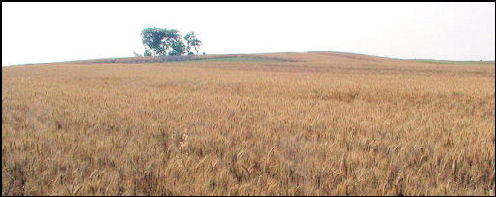
Winter wheat
China’s Wheat Crisis
There are concerns that if China needs to import wheat in volume it will create shortages elsewhere. Wheat prices in Chicago jumped nearly 2 percent in February 2011 when the United Nations’ food agency issued a rare alert that China’s crop was in trouble, and prices remain near their highest level since a steep spike in commodity prices in 2008.
Beijing launched a $1 billion emergency campaign in early 2010 to address problems created by the drought in the world’s largest wheat-growing region including cloud-seeding, expanded irrigation, water dirsion and well digging. Keith Bradsher wrote in the New York Times, “The Finance Ministry has begun offering emergency subsidies of $9 to $11 an acre to help farmers pay for irrigation. Local and provincial governments are also providing financial help... Beijing’s top priority this year is to fight inflation, and food accounts for a third of China’s consumer price index. China’s leadership appears to have become alarmed after Mr. Wen toured drought-stricken regions in late January and then held a cabinet meeting to discuss the problem.” [Source: Keith Bradsher, New York Times, February 13, 2011]
Even as senior Chinese officials exhort local officials to do everything possible to cope with a severe drought in the country’s wheat belt, the government is trying to reassure the public that food prices will not rise. China’s drought-control headquarters posted a statement on its Web site that described conditions as “grim” across a wide area of the wheat belt in Northern China and called for emergency irrigation efforts.
Agricultural experts say it is too early to assess the damage to the wheat harvest. “We are in the winter months now, when it is typically drier anyway, so the seedlings should still be alive,” said an expert at Shandong Agricultural University who would provide only his family name, Wang. “But if the weather turns warmer and there is still no rain, then we will not be talking about lower agricultural production, but rather zero production, because the seedlings will all be dead.”
Light snow and rain fell on north-central areas of China’s wheat belt partly because meteorologists had fired artillery shells and truck and aircraft-mounted rockets loaded with the cloud-seeding chemical silver iodide. Because of the recent precipitation, drought-control officials said last week that about one-tenth of the drought-stricken area had received adequate moisture for now. Prime Minister Wen Jiabao assured the public in televised remarks late last week that the supply and demand of grain were “basically” in balance and that large stockpiles were available.
Soybeans and China
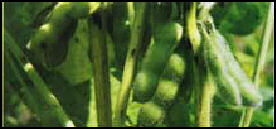
soybeans China consumers 33 million tons of soybeans a year, 16 percent of the world’s total. Some of it is made into soy sauce and tofu but much it is crushed into cattle feed. China produced about 16.5 million tons, and imports the rest from the United States, Brazil, Argentina and other countries. Most soybeans grown in China are produced in Heilongjiang province in the northeast. The industry is threaten by imports from the United States, which produce beans with a higher oil content. In many cases soybeans can be sent more cheaply to crushing plants on the Chinese coast from the United States than from Heilongjiang.
Soybeans are one of the world's most versatile foods. They can be dried, boiled. crushed, curdled, fermented and crushed up into cattle feed and eaten as beans, nuts, oil, flour, powder, tofu, milk and sauce. There are nearly 7,500 varieties of soybeans ranging color from green to red to white with brown marble patterns. The most familiar one is yellow. Soy beans as we know them do not grow in the wild. The largest producers are Brazil and the United States. [Source: Fred Hapgood, National Geographic, July 1987, ╾]
Soybeans come from wild soybeans, ground-dwelling vines that are found in northeastern China and very different from modern, commercial soy bean plants. The black and brown beans from these wild plants were collected by prehistoric Chinese at least by 3500 B.C., first cultivated by Chinese farmers about 1000 B.C., and fashioned into tofu about a 1000 years later. Soy beans were not known by Europeans until a German physician in Japan wrote about them in 1690. They remained largely unknown in the West until 1900.
Soybeans grows well in soils too depleted to support other crops. The colonies of microorganisms that live with the soy bean plants return nitrogen to the soil that helps other crops to grow. Genetically-modified soybeans are widely consumed om China.
Websites: American Soybean Association: www.asa-europe.org ; International Institute of Tropical Agriculture: www.ita.org/crop/soybean
See Trade Issues with the United States
Soy Bean Imports by China
China has a huge demand for soybeans. It has producing bumper crops of soybeans but still needs to important 70 percent of its needs. China is the No. 1 importer of American soy beans. It buys about a third of the soybeans sold on the world market. In 2009, China imported 42 million tons of soya. Vast areas of land in the U.S., Brazil and Argentina are now devoted to supplying the Chinese market.
As Chinese have started eating more meat they have begun importing huge amounts of soybeans to use as livestock feed. This has caused global soybean prices to soar, making export-oriented soy bean farmers around the world very happy bit made ranchers unhappy as they have to pay more for feed. In 2008 China spent 33 times more on soy beans than it did in 1999.
Howard Schneider wrote in the Washington Post, “Globally, China’s changing food habits have been felt most acutely in the market for soybeans. Though the plant is native to China and has been cultivated since early in the country’s history, the government since the early 1990s has emphasized production of rice, wheat and corn because officials consider them more important for people’s diets.” [Source: Howard Schneider, Washington Post May 22, 2011]
That policy was set at a time when China grew about 15 million metric tons of soybeans a year, enough to export some, said Hu Bingchuan, an analyst at China’s Rural Development Institute. China still produces about 15 million metric tons of soybeans — but now imports more than three times that amount to feed its pigs, chickens, cows and farm-raised fish. Much of that will come from the United States, which sends about a quarter of its soy crop to China and is expecting a fourth consecutive record year of exports, forecast at more than 25 million metric tons, according to Xiaoping Zhang, acting director in China for the U.S. Soybean Export Council.
Millet
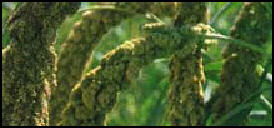
The leading producers of millet are China, India, Pakistan and the former Soviet Union. Millet is a hard cereal that resembles a cat tail with wheat-like stalks growing out of it. Although virtually unknown in North America and western Europe, it is eaten by millions of people, many of them very poor, in semiarid regions of tropical Africa and Asia.
Millet's small seeds can be ground into meal or flour or eaten as whole grain. Because it isn't glutinous, millet flour does not rise and can be made only into a flat, or pan, bread.
The earliest identified crops in China were two drought-resistant species of millet in the north and rice in the south. Domesticated millet was produced in China by 6000 B.C. Most Ancient Chinese ate millet before they ate rice.
Millet grows in a wide range of climates and soils and comes in many varieties. It needs less sun and water than rice and grows well in mountains and semi-deserts where other crops have difficulty growing.
Millet was once grown in western Europe, where it was known as the "poor man's cereal." But over time it has been replaced by rye and wheat. It is still raised in Eastern Europe, where it is used for making bread, porridge and beer.
Researchers say that millet can be made resistant to drought and salt; the nutritional value of its food volume can be boosted; and it can be made resistant to diseases and bacteria through bioengineering. Like sorghum and cassava, unfortunately, it receives little attention from agricultural biotechnology giants like Monsanto and Pioneer Hi-Bred International because there is little profit in it for them.
Website: Syngenta Foundation: : www.syngentafoundation.com/millet.htm
Sorghum
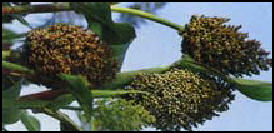
Sorghum is widely grown in northern China. It is a versatile grass originating from Africa. A close relative of millet, it is a purplish red grain that grow at the top of a corn-like plant. It requires relatively little water and grows well in mountainous and semi-desert areas. It provides human food, feed grain, molasses, pasturage and broom straw.
Sorghum is grown in 66 countries. It is the leading cereal grain in Africa and is an important food source in Asia and the Middle East. It is used to make unleavened bread, boiled into porridge or gruel, or processed into malted beverages and specialty foods such as popped grain and beer. The United States is the world’s leading producer. Most of sorghum produced there and in Latin America is used as livestock feed.
Sorghum is sometimes called milo. As is true with oats and rice, sorghum seeds are contained in branching heads called panicles. There are approximately 750 to 1,250 seeds in one sorghum grain head. Sorghum such as kafir and durra are sometimes classified as varieties of millet.
Researchers say that sorghum can be made resistant to drought and salt; the nutritional value of its food volume can be boosted; and it can be made resistant to diseases and bacteria through bioengineering. Like millet and cassava, unfortunately, it receives little attention from agricultural biotechnology giants like Monsanto and Pioneer Hi-Bred International because there is little profit in it for them.
Website: CGIAR Sorghum Researc: www.cgiar.org/research/res_sorghum,html ; Syngenta Foundation: www.syngentafoundation.com/millet.htm
Potatoes in China
Lauren Keane wrote in the Washington Post, “China produces and consumes more potatoes than any other country. But that's largely because of its huge population. The Chinese lag in per capita terms, eating one-third the amount of potatoes that Russians do and two-thirds the amount Americans eat. The average acre of potato plants in China yields far fewer edible spuds than in other developing countries, mostly because farmers plant cheap, disease-prone seed. China's national and local governments are trying to change that by increasing potato funding, hoping the investments will raise rural incomes and help maintain social stability by keeping farmers on their land in the country's poorest areas. [Source: Lauren Keane, Washington Post, May 31, 2010]
Potatoes need less water to grow than rice or wheat, and they yield far more calories per acre. In rice-cultivating regions of southern China, farmers can squeeze a round of fast-growing potatoes into their rice fields in between planting seasons. In some of the poorest parts of arid northern China, potatoes are among the few crops that grow. "Potatoes have so much potential here," said Xie Kaiyun, a leading potato scientist at the Chinese Academy of Agricultural Sciences, a government think tank. "Rice, wheat, corn — we've gone about as far as we can go with them. But not the potato."
Researchers from Hunan Agricultural University started working with the province's potato farmers in 2005 and 2009 used government grant funds to provide training and seeds. Farmers plant in rice fields during the winter, when the land would otherwise produce nothing; potato plants then improve the soil for the next season's rice cultivation.
Efforts to Increase Potato Production in China
Lauren Keane wrote in the Washington Post, “In the land of rice, China is looking at an unlikely tool for maintaining growth and social harmony: the potato. The Chinese government has begun ramping up research, production and training related to the humble spud, and hopes are high that it could help alleviate poverty and serve as a bulwark against famine. [Source: Lauren Keane, Washington Post, May 31, 2010]
In February 2011, the Chinese government signed an agreement with the International Potato Center, a research organization, to jointly launch a major potato research center in Beijing. Part of the center's broad mandate will be to develop varieties that grow quickly and dependably in specific regions throughout China. Last month, the State Council announced subsidies for farmers who grow high-yield seed potatoes. And government-funded pilot programs have been expanding in nearly every province, training farmers in innovative methods that raise crop yields and, with them, rural incomes. "It's unusual to see a country explicitly name a commodity as an instrument of development," said Pamela K. Anderson, director general of the International Potato Center. "It shows how seriously the Chinese government is taking its commitment to food security."
Efforts to Promote Potatoes in China and Make Them Palatable and Profitable
Lauren Keane wrote in the Washington Post, “Ever keen to seize opportunity, Chinese entrepreneurs are turning potatoes into forms more familiar to Chinese palates: buns, noodles, cakes. They are developing exotic varieties and have even sent seeds into orbit, saying that zero gravity makes them more nutritious and charging astronomical premiums for the seeds' offspring back on Earth. [Source: Lauren Keane, Washington Post, May 31, 2010]
Potatoes won't replace rice or wheat as mainstays of Chinese cuisine anytime soon, if ever. They are eaten as side dishes, and the government has not yet named them a staple, a distinction that would mean preferential treatment in domestic markets and would carry significant cultural weight.
It's a good time to be in the Chinese potato business. Wholesale prices increased 85 percent from November to April, thanks in part to a severe drought in the nation's southwest that has limited supply. "We earn the same from one potato crop that we get from three rice crops" or 10 cabbage crops, said Huang Weihua, 40, the leader of the local farmers association. He pointed across a terraced field of flowering potato plants to his house, a two-story brick-and-tile structure. His son was hard at work remodeling the first floor — potato money, Huang said.
But if potatoes are to become a key to China's food security, the market for them must expand even more. "Chinese don't know enough about potatoes and their nutritional benefits," said Xie, the potato scientist. "If they eat one more potato dish every day — well, there are 1.3 billion of us. That's a huge new market."
Liang Xisen was dubbed China's "potato king" last year. The lifelong entrepreneur, who made it into a 2006 list of the nation's richest men, has poured his wealth into potatoes. His company churned out 150,000 tons of high-quality seed potatoes last year, assisted by government subsidies, and sold them to farmers nationwide for a profit of about $22 million, according to company statistics. Liang has even opened China's first Potato Museum. An altar outside presents burned offerings to a giant plaster statue of a Peruvian potato god. A red banner pulled taut above the entrance proclaims: "Little potatoes, big industry."
Premier Wen Jiabao has joined the cause. He shared a meal of steamed potatoes with farmers last fall in Gansu, one of China's poorest and most significant potato-growing provinces. He donned tennis shoes to shovel out spuds, with the video footage running on China's most-watched nightly news broadcast. In China, where government endorsements mean business, Wen's message has trickled down to the Hunan potato fields. On a recent afternoon, Huang stood calf-deep in an irrigation ditch, surveying his ripening crop in a downpour from under a blue polka-dot umbrella. "Wen Jiabao said potatoes are important — on national television!" Huang said, wide-eyed. "I figure that's a good sign for us, right?"
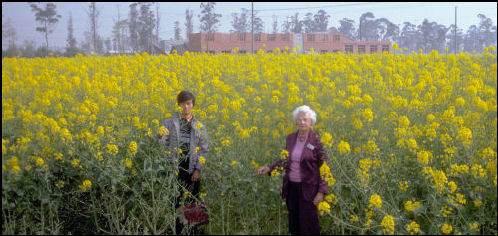
Rapeseed field
Garlic
China exported 86 million tons of garlic to the United States in 2005, 10 times the level of just three year earlier. Chinese typically sells a box of garlic for $11 or $12, and occasionally half that price, while California growers need to sell their boxes for $20 to make any profit.
Garlic is a clove found in the bulb of a plant that probably originated in Central Asia and western Siberia. Belonging to the genus of plants that also includes onions, leeks, shallots, scallions and chives, it is a common ingredient in French, Italian, Spanish, Chinese, Mexican, Korean, Hungarian and Thai cuisine. The bulbs have little smell. The most pungent smells are released when the gloves are cut open. People who eat a lot of garlic are advised to chew on parsley or yeast tablets to remove the bad breath smell.
Among the 300 varieties of garlic grown worldwide are California Later, California Early, Lerg, French, Elephant and Oriental Garlic is grown all over the world. The United States imports garlic from China, Mexico, Argentina, Chile, Taiwan and Spain.
Garlic is relatively easy to cultivate. It is harvested by hand after a tractor-pulled "knife" brings the bulbs up near the surface. The main problems with growing it are not enough water, too much rain, and soil depletion. After the harvest the plants are then dried for two weeks and the roots and stems are removed. Low-quality bulbs are sorted out and the remainder are pealed with a blast of air and "cracked" and divided into cloves in a special machine. Garlic pureed by machines is and used in things like barbecue sauces, salad dressing and a multitude of other products.
Garlic producers in California have accused the Chinese of illegally dumping garlic in the United States. The United States now imports mor Chinese garlic than is produced in California, the traditional American garilic producer. Garlic farmers in the United States are now switching to other crops.
In the early 2000s a 377 percent tariff was issued against Chinese garlic producers but Chinese growers were able to exploit a loophole and dominate the American market without paying the tariff. Garlic growers and producers used a lot of different import-export company. If authorities cracked down on a company it simply declared bankruptcy and the U.S. was left without millions of dollars of tariff that were owed it.
See Garlic, Food
Apples and Lichees
China is the world’s largest apple producer. It grows 53 billion liters (1.5 billion bushels) annually, about half the world’s supply and seven times the amount produced by the United States. Much of the apple juice consumed in the United States and Europe is made with concentrate from Chinese apples. Around the historic city of Xian, apple orchards stretch for miles and miles. There are so many apples, much of the fruit is left to rot and a glut has depressed apple concentrate prices.
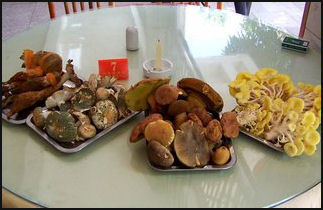
Yunnan mushrooms
Apples are one of the world's most widely produced fruits. Related to roses, they come from a flowering tree that grows almost anywhere and usually bloom each in the spring. They originated in Central Asia, probably in Tien Shen mountains of Kazakhstan or in the Caucasus between the Black Sea and Caspian Sea.
Apples were mentioned in the Bible, Greek myths and the Viking sagas. The earliest apples were versions of crab apples. Pictures of apples have been found in caves used by prehistoric men.
Over the centuries thousands of different apple breeds were created. In the last century or so many of these have disappeared as humanity has selected a few high yield breeds to cultivate. Of the 8,000 apple varieties produced in the United States at the turn of the 20th century 95 percent no longer exist,
So many farmers have taken up raising lichees that prices has plummeted from around $5 a pound to as little as 12 cents
Mushrooms
Chinese-produced matsutake mushrooms are about five to ten times cheaper than Japanese-produced ones. Even so sales of Chinese-produced mushrooms have plummeted over concerns about food safety. Matsutake mushrooms have traditionally been sold for high prices in Japan. They are also produced in North America.
In Daqio, a remote village at 11,000 feet in Yunnan Province, farmers are making a fortune growing matsutake mushrooms for export to Japan, where they fetch a high price. The mushrooms grow wild here amid roots of oak and pine trees. Some people have become so rich they built large homes with satellite television and other luxuries.
Farmers in coastal regions are making a killing producing shiitake mushrooms for export to Japan.
Some Chinese and Japanese farmer raise mushrooms outdoors on logs. China exports large amounts of mushrooms to the U.S. and Pizza Hut in one of their largest customers.
Walnuts come in season in the northern China in September. Villagers carry around long sticks and knock the nuts down from trees.
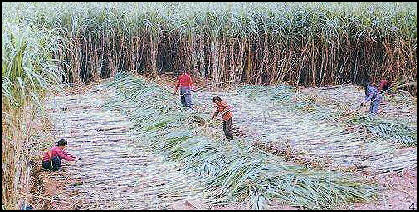
Sugar cane
Sugar, Honey and Spices
The worlds top producers of sugar are (1988): 1) EC-12, 2) India, 3) USSR, 4) Cuba, 5) Brazil, 6) the U.S. 7) China, 8) Mexico, 9) Australia, 10) Thailand.
The honey business is big in the western provinces of China. The top 5 honey making counties (tons per year): 1) former USSR (240,000); 2) China (190,000); 3) USA (91,000); 4) Mexico (52,700); 5) Argentina (44,000).
Largest vanilla producers: 1) Madagascar; 2) Indonesia; 3) China; 4) Thailand; and 5) Uganda.
Saffron is one of the world's most expensive spices. Grown in China, France, Spain and Iran, it comes from the crocus flower and is used to color and give a flower aroma to rice dishes. Over 200,000 stamens are needed to make one pound of saffron.
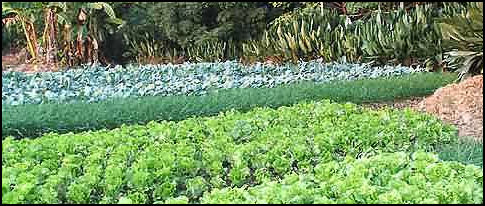
Lettuce
Other Crops
China is the world's leading producer of sweet potatoes and yams. China is also the world’s leading consumer of major oil seed (65,361,000 tons).
China is the No. 1 producer of rapeseed. It grew 14 million tons in 2006 and hopes to produce more as the as biodeisel became more widely embraced as a fuel.
China is world’s leader in cotton production and most of it is GM cotton. China consumes 37 percent of the world’s cotton.
Yunnan Province produces about 2.5 million tons of tobacco annually, about a quarter of China’s total output. Yunnan is home to the Kunming Cigarette Factory, the Qujing Cigarette Factory, and Yunnan Hongta Group, China’s largest cigarette maker.
China is the largest rubber user as it is now a large vehicle and tire producer and consumer.
Much of Yunnan’s cigarette industry is centered around Yuxi, where everyone seems to have a connection with the cigarette industry. Tobacco grown in the rich red soil around Chuxiong is regarded as the best in the country.
Many farmers grow tobacco because it is the most lucrative crop they can grow. Tobacco farmers earn about 65 cents a pound, considerably more than they can earn from most other crops.
Image Sources:
Image Sources: University of Washington, Nolls China website http://www.paulnoll.com/China/index.html , Beifan.com http://www.beifan.com/except container ship (Nerd blog); Jiahu (Metropolitan Museum of Art).
Text Sources: New York Times, Washington Post, Los Angeles Times, Times of London, National Geographic, The New Yorker, Time, Newsweek, Reuters, AP, Lonely Planet Guides, Compton’s Encyclopedia and various books and other publications.
Last updated January 2013
